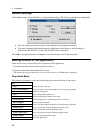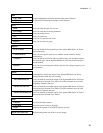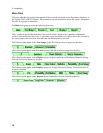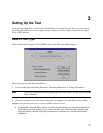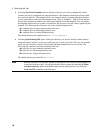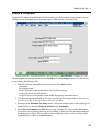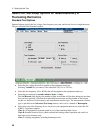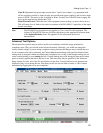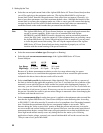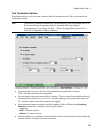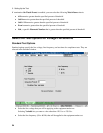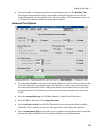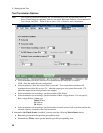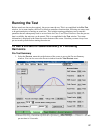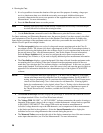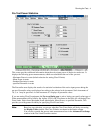
3 - Setting Up the Test
22
ñ Select the rms and peak current limit of the Agilent 6800-Series AC Power Source/Analyzer that
you will be applying to the equipment under test. (The Agilent Model 6843A only has rms
current limit control, therefore, the peak current limit control does not appear.) Generally, it is
best to leave these parameters set to their maximum default values. Although the function of the
current limit is to protect the equipment under test, if the ac source goes into current limit during
a normal test the test will be invalid. Default maximum current limit values are automatically
established based on the model number that you entered into the Main window.
Note The Agilent 6800-Series AC Power Source/Analyzer can supply brief peak currents that
exceed its current capability. If this occurs for an extended time with Agilent
6812B/6841A and 6813B/6842A models, the units may activate an internal protection
circuit (the SOA limit) to turn the output off. If the equipment that you are testing causes
the Agilent 6800-Series AC Power Source/Analyzer to turn its output off, you may need
to lower the peak current limit setting. This will clip the output current of the Agilent
6800-Series AC Power Source/Analyzer during inrush but if properly set, will not
interfere with the normal running of the pre-test and tests.
ñ Select the measurement window type (Rectangular or Hanning)
ñ Select the peak current measurement range of the Agilent 6800-Series AC Power
Source/Analyzer
6812B
6841A
6813B
6842A
6843A
Low Range
8 A peak 8 A peak 9.6 A peak
High Range
80 A peak 80 A peak 96 A peak
Because of its better measurement resolution, use the low range when testing low power
equipment. However, be careful that the equipment under test never exceeds the peak currents
indicated in the above chart or the test results will be invalid.
ñ Select a test limit override for the harmonic failure threshold. This is specified as a percent of
the limit as defined by the applicable regulation. For Class C, test limits are also a function of the
measured (or user-specified) power factor and the line current at the fundamental frequency. If
necessary, you can override the power factor measured in the pre-test. For Class D, test limits are
also a function of real power (or watts). If necessary you can also override the watts measured in
the pre-test. Overrides are useful to prevent minor changes in measured values from changing the
test limits each time the test is run.
ñ Select a measurement delay from the time power is applied to the equipment under test until the
time that the Agilent 6800-Series AC Power Source/Analyzer starts measuring data. According
to EN 61000-3-2, this delay must be 10 seconds or less for compliance level fluctuating harmonic
tests. Note that the measurement delay has no consequential impact on test results. This is
because during the "delay to start of test" portion of both the pre-test and main test, test results
are not recorded and current limiting events are ignored. However, once the actual acquisition of
measurement data begins, current limit events are again treated as errors that invalidate the test.
Since high inrush currents usually occur only during the first few mains cycles following
application of mains voltage, a properly set current limit threshold will not be crossed once the
"delay to start of test" period has ended.



